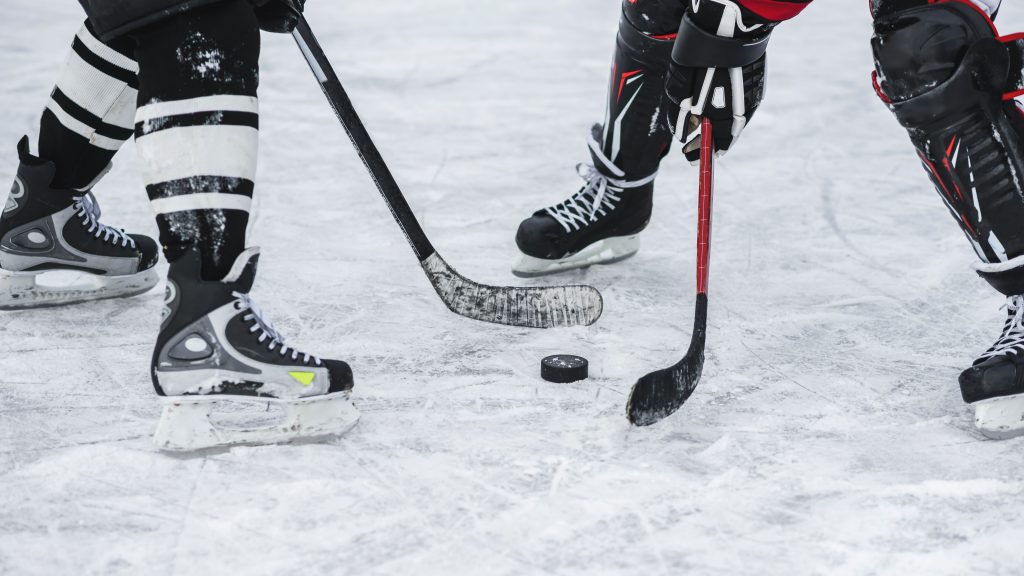Hockey is notorious for being a high-impact sport. Gliding across the ice on skates, players can reach high speeds very quickly. The maneuvers it takes to come to a stop are enough to pull a muscle, and hitting the boards or other players can result in traumatic injuries.
As physical therapists, we help hockey players with conditioning to help prevent injuries and with recovery. In this blog post, we’ll discuss six common hockey injuries and how to prevent them.
6 common hockey injuries that can be prevented
While shoulder checks and collisions aren’t always avoidable, there are some ways that hockey players can reduce their chances of serious injury. Wearing protective gear that fits properly and warming up with dynamic stretching every time you take to the ice are both important preventive measures. Concussions and traumatic injuries happen even to the most cautious and prepared players. However, players who condition their bodies with physical therapy can sometimes minimize damage from injuries and recover a bit faster than they otherwise would.
The following is a list of common hockey injuries with strategies for prevention:
- Knee sprains and tears — Medial collateral ligament (MCL) sprains and tears are some of the most common injuries among hockey players, and anterior cruciate ligament (ACL) injuries can also happen.
- Pulled muscles — Coming to a stop and changing directions can exert a lot of force on certain muscles. The groin, adductors, hamstring and back are commonly affected.
- Separated shoulder — Both shoulder checks and running into the boards can partially or completely tear the ligaments that attach the collarbone to the shoulder blade.
- Elbow sprains and bursitis — Hockey players risk elbow injuries when they brace themselves for a fall or take direct blows. While bursitis is sometimes an overuse injury, it can also be a result of a traumatic injury.
- Wrist sprains and fractures — Like elbow injuries, wrist sprains and fractures are also a hazard of collisions and falls.
- Ankle sprains — Wrenching your skates to a stop at high speeds or colliding with other players head-on can cause an ankle sprain.
How can physical therapy help prevent hockey injuries?
Along with education about healthy movement and injury prevention, physical therapists help hockey players with strength training and conditioning. Creating balance in your weight training workouts helps ensure that your joints and other support structures in your body are stable. A physical therapist can also help ensure that you have strength in all the places that are vulnerable to injury, such as the arms, chest and lower back. You also need flexibility and range of motion because muscles that are tight and stiff are more vulnerable to injury.
Your physical therapist can help you create a warmup routine to engage the muscles you’ll be using most and the places that are vulnerable to injury. They can also talk with you about the nutrition you’ll need to support your activity during practices and games. Working with an Armor Physical Therapy PT ensures that you get individualized attention. Your PT can adjust your workout program as things change and help prevent overuse injuries as you start to notice pain.
Are you looking for a physical therapist to help you prevent hockey injuries? Call us or request an appointment today.
